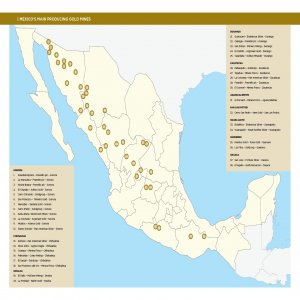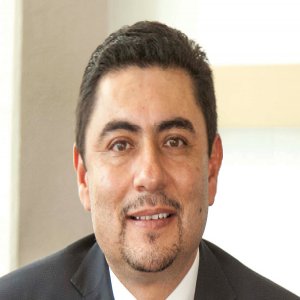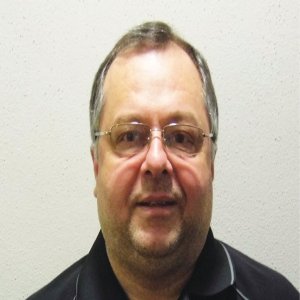Flexible Steel Mesh Protection from Rock Falls

Flexible Steel Mesh Protection from Rock Falls

STORY INLINE POST
Q: How important can protection systems against geological hazards prove themselves to be in the mining industry?
ER: These protection systems are essential because they can mitigate hazards and productivity risks. Most of the protection systems that we have deployed in the mining sector have been to help ensure the continuity of operations and to minimize the risks to which mining workers are exposed. Our systems, besides helping to keep personnel safe, also contribute to the protection of the valuable equipment that miners use to exploit their ore deposits and to process the materials, which are often exposed to rock falls, landslides, and rock bursts. If these risks are not controlled, they can seriously impact the productivity of a mine. Our products can help mining companies to maintain the smooth flow of their operations without being disrupted by rockfalls or slope instabilities. Geobrugg has been installing protection systems for open-pit mining for years but we are now moving to underground mines as well. Our products are ideal for dynamic conditions such as the ones found in deep underground tunnels where the mechanics of the rock are very active and present a broad range of challenges.
Q: What are the main products you offer to the Mexican mining industry, and to what extent can they remove the risk of rockfalls or landslides from mines?
ER: All of our products can provide a solution for the mining industry, from our rock fall and debris barriers, to our meshes and nets for slope stabilization and our tunneling ground support equipment. We offer a high strength and flexible steel mesh that is very good for dynamic conditions or rock bursting situations. We also have a lighter version for general ground support; which is a lightweight mesh with the same strength as regular meshes but at a fraction of the weight. Since we are using high tensile steel, we can make use of smaller wires and still have the same strength.
Thanks to its light weight, this mesh is easier to transport and to install, while being safer and more cost competitive. However, we are not in the risk elimination business but rather in the risk reduction business. That means that there is always some residual risk. We do not perform regular inspections, and if one of our systems has been compromised due to unforeseen conditions, it is the responsibility of the customer to report it so that we can advise on a proper repair as soon as possible. However, we do provide maintenance and inspection recommendations so that it is possible to increase the lifespan of our products beyond the industry standard.
Q: How do you measure the impact of your products in a mine?
RB: Our impact is very hard to measure for us because we do not reside in the mine sites. Mining companies are really the ones who see the impact of our systems by the decrease in the number of accidents in a certain period of time. One of the most commonly used Geobrugg products is a mesh created for environments with low risk of dynamic events. Another product has proven itself to be useful under dynamic conditions, and has been used in the El Teniente mine in Chile where over 25,000m2 have been installed for rock burst mitigation.
ER: We cannot test our product’s efficacy without actual rock falls, which makes it very hard to analyze something that never happened. However, the efficacy of our products can be measured in cost savings. For example, Codelco in Chile has already understood that our products are reliable and that they can strongly contribute to productivity and safety. Safety is not an easy parameter to measure, unlike productivity. Codelco measured how the mesh adapted to the irregularities of the tunnel and how it resisted during blasting operations and realized that the saving in the meshing process would be up to 30%. We are now promoting our automated process that was designed to install the mesh in an even smarter and faster way without endangering the operators. These systems will allow companies to create even more savings, due to the speed and efficiency with which the mesh can be installed inside a mine.
Q: What are the advantages that underground mining companies in Mexico can get by using Geobrugg’s meshing systems?
RB: Many mining companies are still using conventional methods to install the meshes in tunnels, which are very inefficient when compared to our new system. First of all our system does not require a person at the front; this is ideal since that is the place where most rocks tend to fall. During the blasting operation they need to install a mesh that will resist impact from the rocks that fly due to the energy released. Of course, after the blasting is done, they may need to fix the mesh or replace it with a new mesh. The products that we manufacture are highly blast resistant due to the tensile wire being used, meaning the mesh can be used multiple times before repair is necessary.
Q: How is Geobrugg able to identify any potential geological threats that might be raised within a mining operation?
ER: This information is normally gathered by our customers. They are familiar with the conditions surrounding their operation, so they come to us to provide them with an ideal protection system for those specific conditions. In deep underground mines with high stress or significant rock bursting conditions, customers are best able to identify those dangers. We do not work as a consultancy firm that conducts geotechnical studies to evaluate the behavior of rocks. Nonetheless, we do have experienced engineers that can assist in designing a solution to reduce the existing geological hazards.
RB: We have a wide range of products that can be adapted to solve most of the threats identified by our customers. Our engineers have the capabilities to interpret the data provided by them to find a solution that best addresses the dangers. The solutions that are deployed depend on the geological conditions being faced. Our engineers will decide whether to deploy passive or active protection. We can install systems that are able to catch rock falling into the pits or we can deploy systems that prevent that from happening in the first place. This will also depend on our customers’ budgets destined to mitigate geological risks. Our company has vast experience in preventing accidents related to geological conditions. Most people working for Geobrugg are either engineers or geologists, so we have the knowledge needed to take on any challenge facing the mining industry.
Q: What type of instrumentation and technological advances does Geobrugg employ to fully understand the behavior of earth materials?
ER: For surface slope applications, we have dimensioning software, called RUVOLUM, that enables design engineers to input different geological variables such as soil cohesion, slope angle, and so forth. This software allows our engineers to discover the optimal design for the spacing of anchors and the installation of other products. We developed this software working alongside the Swiss Federal Research Institute. We are now doing the same thing for underground conditions to be able to model the exact conditions of a mine. This will allow us to know how the bolting should be performed to work perfectly with our mesh. We also have software called DEBFLOW that was created to enhance our understanding of how our debris barriers should be designed using its capabilities for rigorous virtual testing.
Q: How do you conduct full tests to verify product performance?
ER: This is critical as there is no way to fully know how our products will behave unless they are tested under real conditions. We do use computer modeling but these models cannot fully replicate all the factors that intervene in a geological threat. For this reason, we must conduct field tests to truly see how our solutions will stand up once exposed to debris flows, landslides, and even avalanches. It helps us with our liability and gives us credibility since these tests prove our equipment’s performance under real conditions.
RB: This is something that really impressed me three years ago when I first joined the company. It was incredible to see how every single product is tested under real environmental conditions. As a matter of fact, the company holds the world record regarding rock containment. Our systems were able to contain 20 metric tonnes in a free fall from 43m traveling at a speed of 103 km/h.
ER: The company has long worked for the civil infrastructure sector and we are constantly making use of this knowledge in mining projects. The geological threats to which civilians are exposed are not that different from the risks that miners encounter. Of course, when it comes to open-pit slope stability or underground mine steadiness, we bring specific solutions to the table.
Q: What future innovations can we expect from Geobrugg in terms of protection systems against geological hazards inside mines?
RB: Our automated systems are already entering the market. Two years ago, this seemed like the future, but today, companies like Codelco are starting to rely on it. We now have enough technological advances to satisfy the needs of tomorrow. Nevertheless, Geobrugg is actively working with research institutes to develop new systems and to look for alternative materials that can enhance the reliability and efficiency of our products.






















